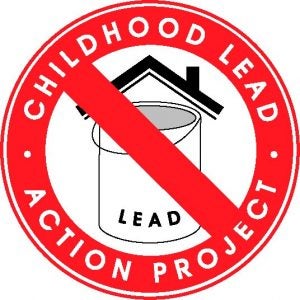Tom Neltner, J.D., Chemicals Policy Director, Lindsay McCormick, Program Manager, and Sam Lovell, Project Manager.
See all blogs in our LCR series.
[pullquote]
“Household-level changes that depend on ability-to-pay will leave low-income households with disproportionately higher health risks.”
– EPA Environmental Justice Analysis of the proposed rule.
[/pullquote]Reviewing a rulemaking docket can be intimidating, especially for a major rule like the Environmental Protection Agency’s (EPA) proposed revisions to its Lead and Copper Rule (LCR), which includes 853 supporting documents and tens of thousands of pages. Though we cannot claim to have read all of the documents, we did a targeted scan of key materials, knowing that they often yield insights and results that are lost in the summary that appears in the Federal Register.
The effort for us paid off when we read EPA’s Environmental Justice (EJ) Analysis of the LCR proposal revisions (the Proposal), commissioned in response to Executive Order 12898. The Order directs agencies to identify and address, “as appropriate, disproportionately high and adverse human health or environmental effects of its programs, policies, and activities on minority populations and low-income populations” in rulemaking. The agency’s contractor essentially found:
- The current LCR disproportionately impacts low-income and minority populations as they are more likely to live in older housing that has lead service lines (LSLs), the most significant source of lead in drinking water.
- The Proposal’s corrosion control requirements should help reduce current disparities. Because water treatment is consistent across an entire community, stronger requirements that reduce the ability of lead to leach into water from LSLs, leaded solder, and other sources should mitigate, but not eliminate, the disproportionate burden in homes with LSLs.
- The Proposal may make disparities worse if it depends on individual household’s ability to pay for LSL replacement (LSLR). The report stated that “Household-level changes that depend on ability-to-pay will leave low-income households with disproportionately higher health risks.”[1]
In the Federal Register notice, EPA glossed over the third point and concluded that the Proposal is “not expected to have disproportionately high and adverse human health or environmental effects on minority populations and low-income populations.”[2] The agency ignores the fact that the Proposal makes no change to the current LCR provisions that rely on a household’s ability to pay when it says water systems are “not required to bear the cost of removal of the portion of the [LSL] it does not own.”[3] We are aware of only a small – but growing – number of communities that have funding options to assist households with the cost of LSLR on private property.
Read More »
 The Childhood Lead Action Project was founded in 1992 to take on this challenge, with the mission of eliminating childhood lead poisoning in Rhode Island through education, parent support, and advocacy. The organization does it all: workshops and educational outreach for a wide range of audiences, municipal and state-level advocacy to push proactive policies, grassroots campaigning, and more.
The Childhood Lead Action Project was founded in 1992 to take on this challenge, with the mission of eliminating childhood lead poisoning in Rhode Island through education, parent support, and advocacy. The organization does it all: workshops and educational outreach for a wide range of audiences, municipal and state-level advocacy to push proactive policies, grassroots campaigning, and more.








